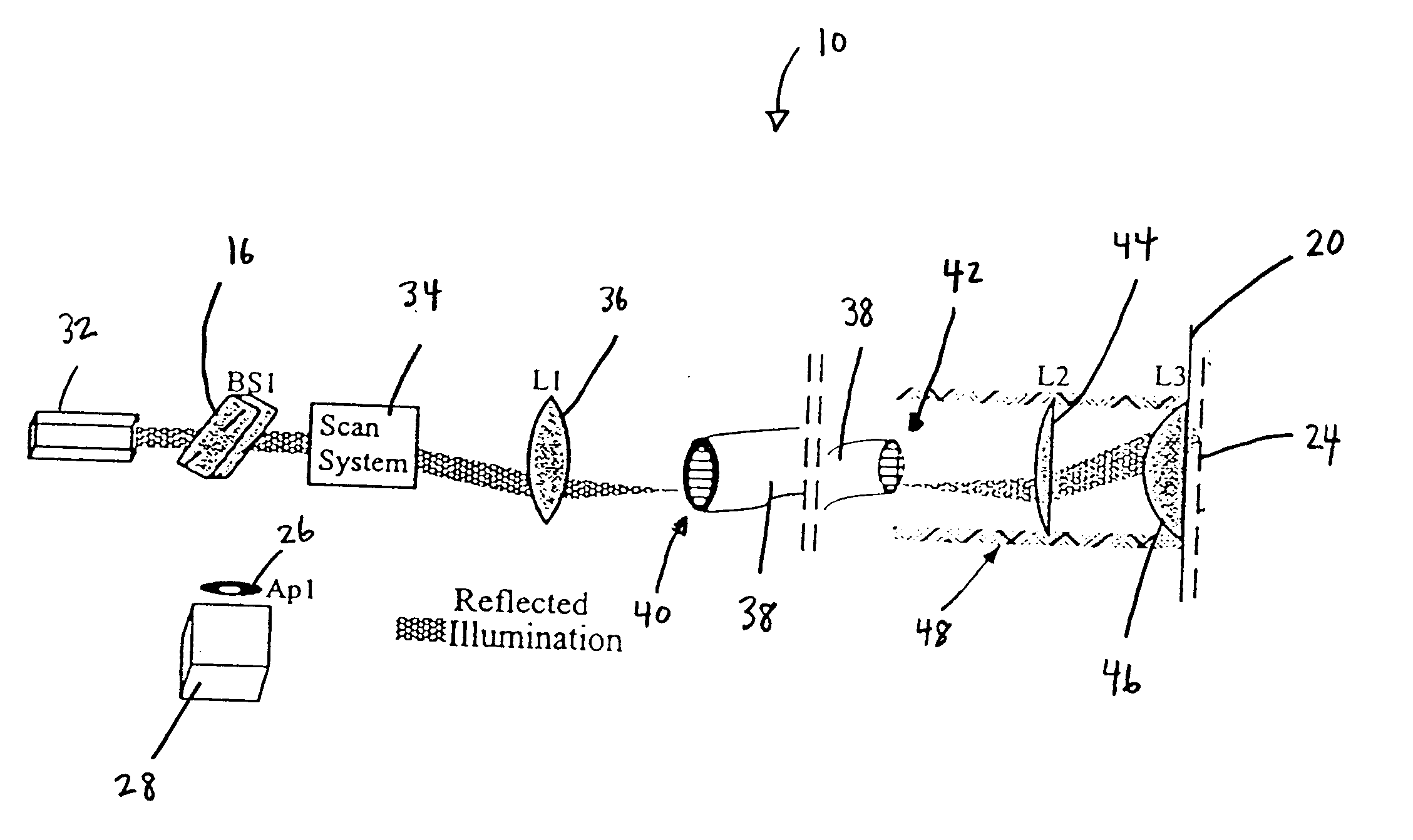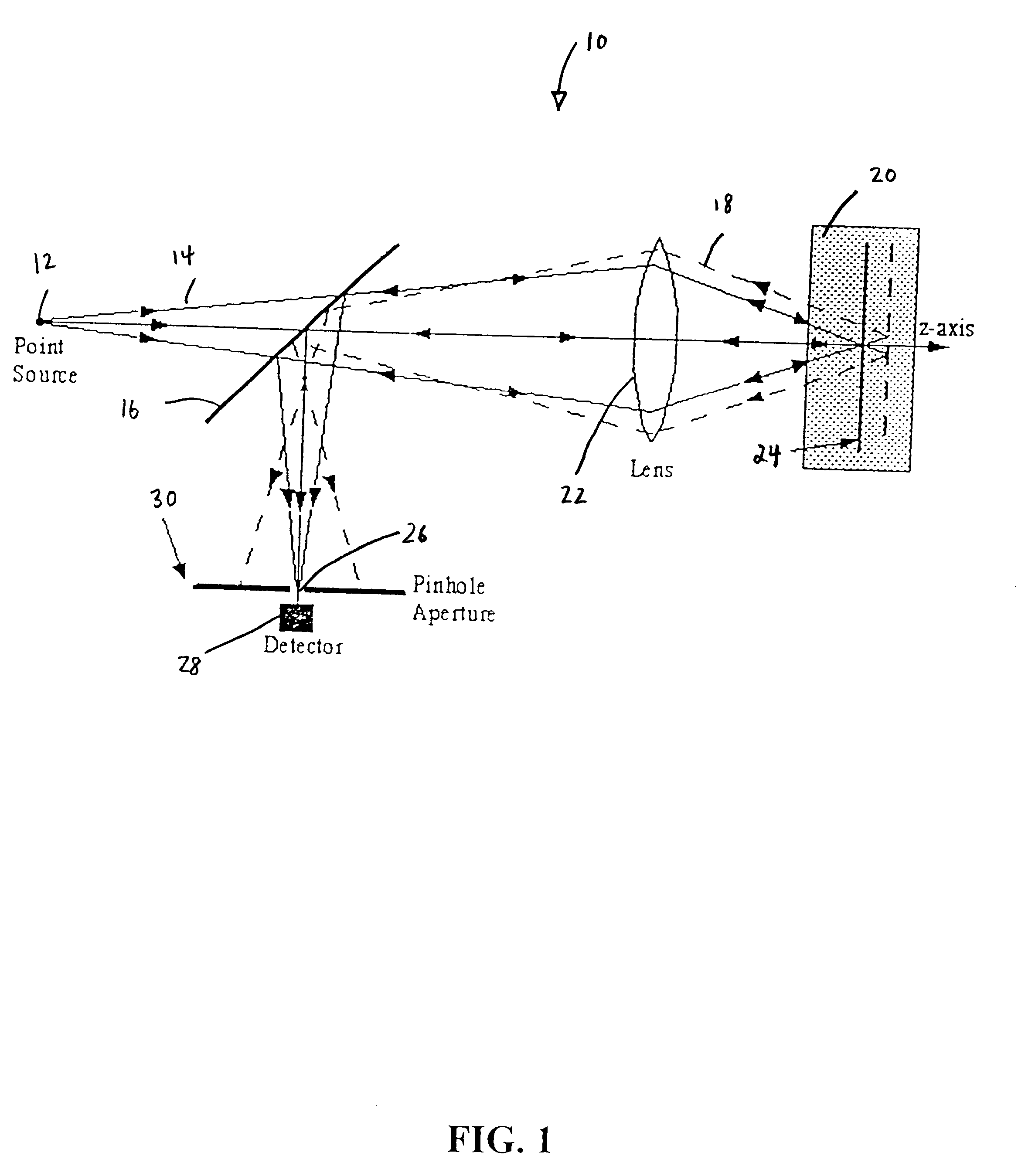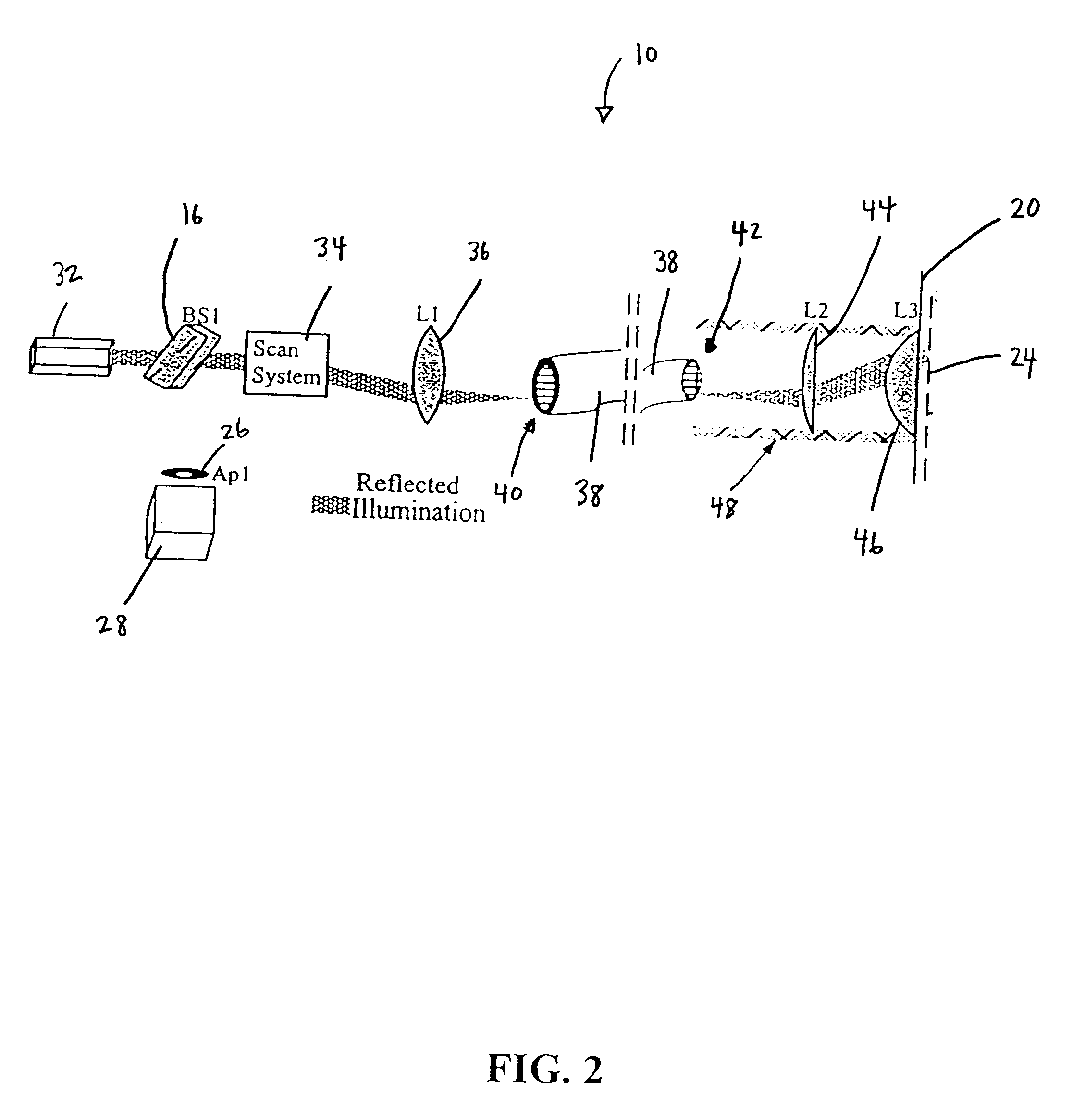Fiber-optic confocal imaging apparatus and methods of use
a fiber-optic confocal and imaging apparatus technology, applied in the field of optics and microscopy, can solve the problems of lack of spatial resolution, inability to obtain individual cells, and inability to demonstrate the spatial resolution necessary to image cellular structur
- Summary
- Abstract
- Description
- Claims
- Application Information
AI Technical Summary
Benefits of technology
Problems solved by technology
Method used
Image
Examples
Embodiment Construction
The presently disclosed methods and apparatus may be applied to the imaging of essentially sample, including any tissue in human or other animal. Such tissues include bone, muscle, ligament, tendon, cartilage, heart, mucus membrane, intestine, gall bladder, pancreas, urethra, lung, brain, prostate, kidney, liver, ovary, breast, skin, stomach, esophagus, head & neck, testicles, colon, cervix, lymphatic system and blood.
The presently disclosed methods and apparatus may be applied to the measurement of tumor resection margins. Tumors may be of essentially any origin and include cancers of the lung, brain, prostate, kidney, liver, ovary, breast, skin, stomach, esophagus, head and neck, testicle, colon, cervix, lymphatic system and / or blood. The presently disclosed methods and apparatus may be of particular use in the field of forensic medicine. In particular, microscopic, 3-dimensional images of wounds may be created. The presently disclosed methods and apparatus may be used in the rese...
PUM
 Login to View More
Login to View More Abstract
Description
Claims
Application Information
 Login to View More
Login to View More - R&D
- Intellectual Property
- Life Sciences
- Materials
- Tech Scout
- Unparalleled Data Quality
- Higher Quality Content
- 60% Fewer Hallucinations
Browse by: Latest US Patents, China's latest patents, Technical Efficacy Thesaurus, Application Domain, Technology Topic, Popular Technical Reports.
© 2025 PatSnap. All rights reserved.Legal|Privacy policy|Modern Slavery Act Transparency Statement|Sitemap|About US| Contact US: help@patsnap.com



